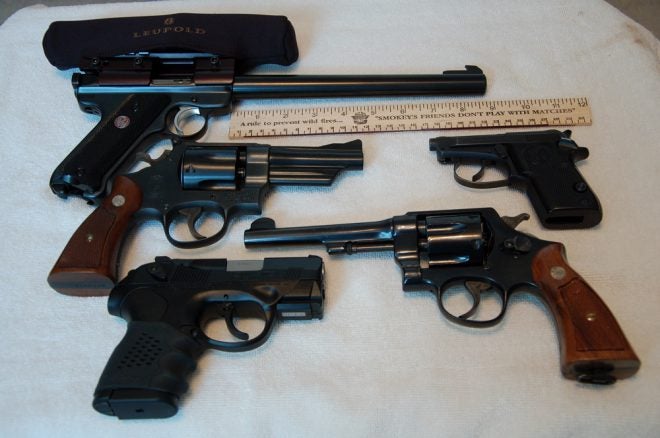Handgun Barrel Length: A Primer
Dr. John Woods 10.26.17

Much has been written over the years about performance differences between various lengths of rifle barrels, but there has been relatively little discussion about the differences in barrel lengths for handguns. What differences does it make in a pistol or revolver?
Back in the 70s or so, Dan Wesson brought out its interchangeable-barrel 357 Magnum revolver, which could be fitted with barrels of various length, from 2 to about 14 inches if I recall. A report came out examining various issues of shooting performance in that revolver as the barrels were switched from the shortest to the longest.
There was very little demonstrated differences in the bullet velocity from one barrel to the next, but there was some. Just not as noticeable as in a centerfire rifle. Other differences were noted though.
Short-barreled handguns in the 2-3 inch category were called “snub-nosed” guns back in the day. Today they are “carry” guns or “concealed” handguns. The short barrels are more portable and indeed concealable. With full-bore loads the muzzle flip or recoil can be considerable as can be the muzzle flash and muzzle report.
Most of these snubbies were intended for short-range self-defense work. With such a short barrel comes a short sight radius, and they were generally considered point-and-shoot handguns. Ammunition velocities out of these guns more or less set the starting base for handgun bullet performance.
As the length of barrels increased within the same caliber, other factors began to change as well. All else being equal, bullet velocities increased somewhat when going to a 4-inch barrel, but certainly to a 6 or 8 inch or even a 10-inch in some handguns intended for target shooting or hunting.
These factors are even more pronounced as you climb the caliber sizes up to the magnums, but certainly with ones like the 454 Casull, 460 or 500 Smith and Wesson. These truly big-bore handguns wreak havoc on both ends of the firearm. If you ever have a chance to shoot a 4-inch S&W 500, do so for the sheer experience of it. I have, but won’t again. Ruark aside, I think there really can be too much gun in some cases.
Longer-barreled handguns are better suited for tasks like hunting, where the longer sight radius produces more effective aiming over open sights. The long barrel will also maximize bullet performance on game. As handgun barrel length gets longer, you can expect better handling, better muzzle control, less muzzle flip or noise, enhanced sighting, and better terminal ballistics.